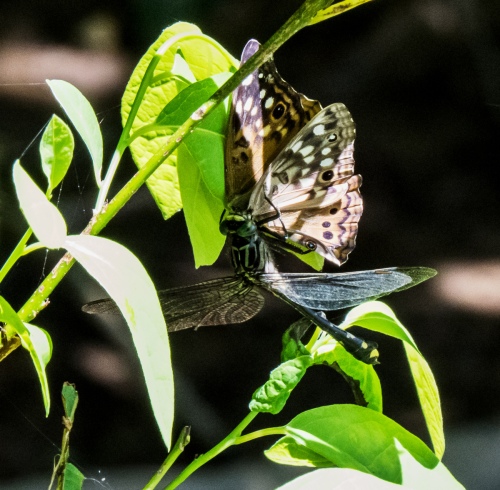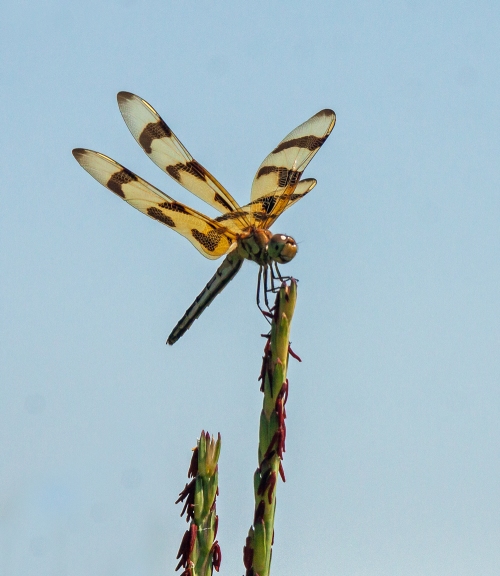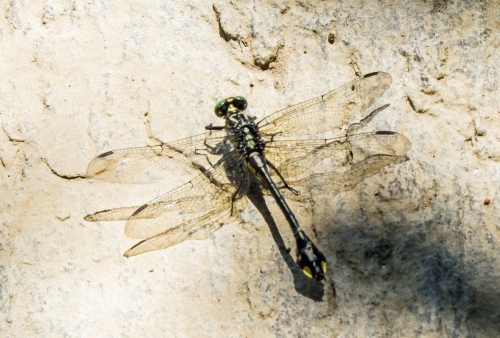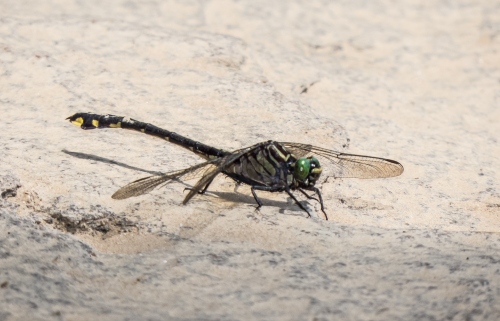Posted in Butterflies, Dragonflies, dragonfly, Insects, Nature, Photography, Summer, wildlife, tagged Asterocampa celtis, Cobra Clubtail, Cobra Clubtail dragonfly, cobra strike, Gomphurus vastus, Great Falls VA, Hackberry Emperor, Hackberry Emperor butterfly, live like you were dying, Riverbend Park on July 2, 2018|
11 Comments »
It is easy to be so dazzled by the beauty and the aerial skills of dragonflies that you forget that they are also fearsome predators. I had a stark reminder of this grim reality on Friday when I encountered a Cobra Clubtail dragonfly (Gomphurus vastus) that had captured a Hackberry Emperor butterfly (Asterocampa celtis) at Riverbend Park. The dragonfly was starting to consume the butterfly and in the photo below almost appears to be suspended in mid-air.
In the past I have observed dragonflies with small butterflies, but this was the first time to see one with a larger butterfly. I really like butterflies and so I felt a mixture of horror and fascination when I stumbled upon this scene. Life in the wild can be brutal and today’s predators can become tomorrow’s prey—a fellow photographer posted a photo yesterday of a bird that had captured a dragonfly.
All in all, this moment served as a sober reminder to me of the fragility of life and of beauty. Somehow it brings to mind a country music song that I really like by Tim McGraw, a song that recommends that you live like you were dying. If you have not familiar with the song or simply want to hear it again, check out the official music video here on YouTube.

© Michael Q. Powell. All rights reserved.
Read Full Post »






